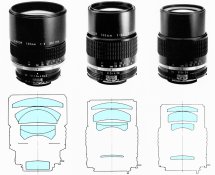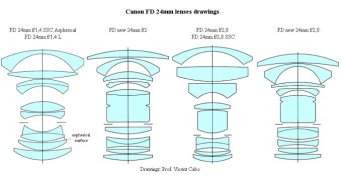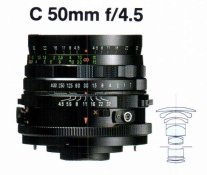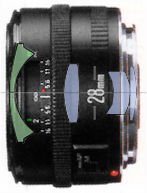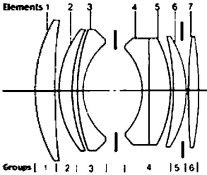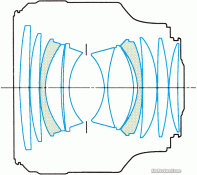No, he does not present what I'm looking for.
As he switches between FLs and years, making comparison difficult.
Let me help you, exactly what do you need to know?
The basic Tessar design has not varied in any way over the years, what has changed is the computations of each Tessar lens; thanks to better glass types the performance has been improved and improved.
Regarding lens speed, i think f2.8 is the max reasonable limit for all tessars; or at least i haven't found a faster Tessar.
As for lens designs, here is a basic rundown of the typical classic designs used as "starting point" for a lens. Using the 35mm format, for each focal length:
50 to about 80mm:
f3.5 and slower -> triplet aka "Cooke triplet" aka "Triotar"
f2.8 -> tessar aka "xenar" aka "skopar" aka a lot of brand names for the same configuration
f1.7 to f2.0 -> double gauss, either 6-element or 5-element ("xenotar") configuration
f1.4 -> double gauss, typically 7 element aka "deluxe double gauss"
Typical "deluxe double gauss":
f1.2 -> deluxe double gauss, perhaps with some aspheric lens
f1.0 -> super deluxe gauss with aspheric elements (Canon) or glass of ultra high refractive index (Leitz)
Sample: Canon EF 50/1.0:
24 to 35mm: The classic design was the Angenieux Retrofocus, but this design is not used anymore. Wideangles are custom designed but wideangle designs of the 70s and 80s look very much alike.
The exception was with the Canon EF system which broke a little bit the mold: Their EF 24/2.8 is a rear-focusing design, very interesting. And their 28/2.8 was perhaps one of the most simplest 28mm lens designs; they used an aspheric lens to bring down the lens element count to about 5.
Here is what the 80s Canon 24mm lenses looked like -- many many other wideangles follow a similar design to the 24/2.8 pictured at the right:
Interesting article about the evolution of the Canon FD 24mm lens -- the image came from here:
http://www.marcocavina.com/articoli_fotografici/Canon_24mm_evolution/00_pag.htm
A similar wideangle lens: The 50/4.5C for the RB67 sytem. Look how similar is the design:
28mm lenses are pretty similar, just with less lens elements. An innovative departure was the Canon EF 28/2.8 mentioned before, look at how simple is the design:
100mm to 135mm: They mostly use a telephoto design that looks more or less similar, looks like this usually:


